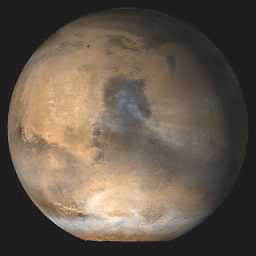"The rocks in the Columbia Hills they've seen a lot of water! They've been soaked, they've been altered, there is all sort of evidence that it was a different Mars when those rocks were laid down."
- Larry Crumpler, Ph.D., Geologist

February 25, 2005 Albuquerque, New Mexico - There was a discovery by the Spirit Rover on Mars which thrilled NASA scientists in the summer of 2004. Both rovers, Spirit and Opportunity, have been looking for hard geological evidence that Mars had a watery past. Spirit's discovery would hold up in a "court room" as solid evidence of water, one geologist told me. And if there was once a lot of water on the Martian surface, was there life in that water? If organisms did live in Martian water, could they still be frozen in surface ice - or even living today underground and in caves on Mars? Could living organisms explain methane, formaldehyde and water vapor reported in the Martian atmosphere?
Click here to subscribe and get instant access to read this report.
Click here to check your existing subscription status.
Existing members, login below:
© 1998 - 2025 by Linda Moulton Howe.
All Rights Reserved.

